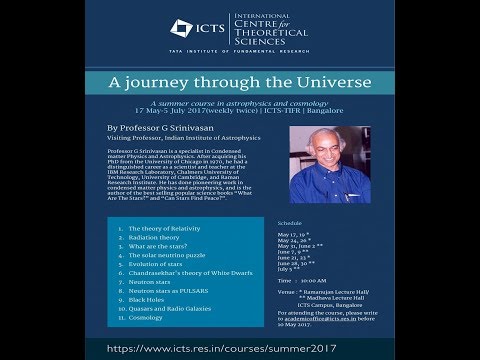Description:
Explore the fascinating world of stars in this comprehensive lecture by Professor G Srinivasan, part of a summer course on gravity, astrophysics, and cosmology. Delve into topics such as the structure of stars, hydrostatic equilibrium, Eddington's theory, mass-luminosity relationships, and nuclear fusion processes. Learn about the Sun's interior, energy production mechanisms, and the factors that determine stellar lifetimes. Discover the intricacies of quantum tunneling, nuclear cycles, and fusion reactions that power stars. Gain insights into the historical development of stellar physics, including Eddington's contributions and the resolution of early puzzles in the field. Suitable for advanced undergraduates and graduate students in physics and astronomy, this lecture offers a deep dive into the nature of stars and their place in the universe.

What Are the Stars? - by G Srinivasan
Add to list